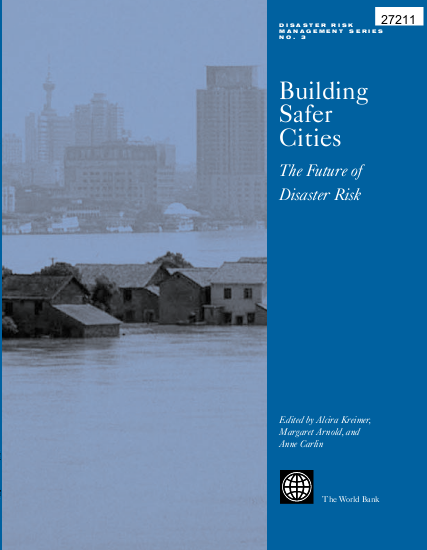
Vulnerability to disaster impacts is one of the most underestimated issues in urban development. By 2050, the world population is expected to grow by 3 billion people. Most of this growth will take place in developing countries— and within these countries, in cities and towns—more than doubling urban populations. Large numbers of people will be concentrated in megacities and on fragile lands, making reduction of vulnerability to disasters in metropolitan areas a critical challenge facing development. Disaster impacts are increasing in severity. Annual direct losses for weather-related events have increased from $3.9 billion in the 1950s to $63 billion in the 1990s. Moreover, a number of ongoing trends have the potential to cause even more severe and broader disaster impacts than ever before. These include increased environmental degradation, the impacts of climate change, population growth in cities, and globalization. Increasingly, disasters affect communities far beyond the areas of geographic impact as regions are linked in new ways. During the 1999 earthquake in Turkey, numerous textile factories collapsed, bringing to a standstill Turkey’s large demand for African cotton. While the September 11 terrorist strikes had devastating impacts in the United States, the greatest economic and human impacts may be felt in Sub-Saharan Africa. The World Bank estimates that the resulting global economic slowdown could kill 20,000–40,000 children, half of them in Africa, as poverty worsens. While industrialized countries may register higher economic losses following a disaster, there are frequently systems in place to respond to the event to minimize loss of life. Property is often covered by insurance. In developing countries, by contrast, disasters can cause major setbacks to economic and social development, inflict massive casualties, and cause the diversion of funds from development to emergency relief and recovery. Urban areas are particularly vulnerable to disruptions from extreme events, especially in developing countries, where the combination of structural poverty, decaying and substandard infrastructure, high population densities, and the concentration of economic assets and commercial and industrial activities magnify the problem.
Resource collections
- UN Habitat - Urban Response Collection
- Urban Response - Urban Crisis Preparedness and Risk Reduction
- Urban Response Collection - Community Engagement and Social Cohesion
- Urban Response Collection - Economic Recovery
- Urban Response Collection - Environment and Climate Change
- Urban Response Collection - Housing, Land and Property
- Urban Response Collection - Urban Crisis Response, Recovery and Reconstruction
- Urban Response Collection - Urban Resilience
